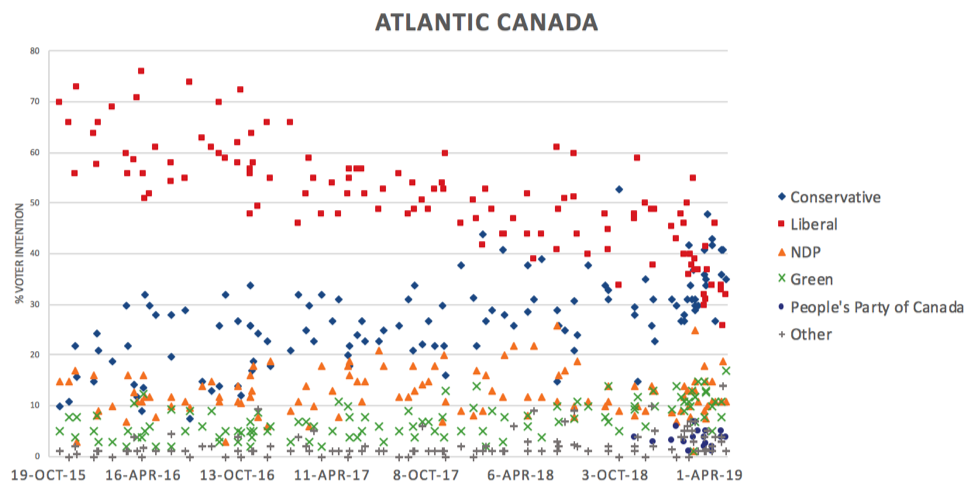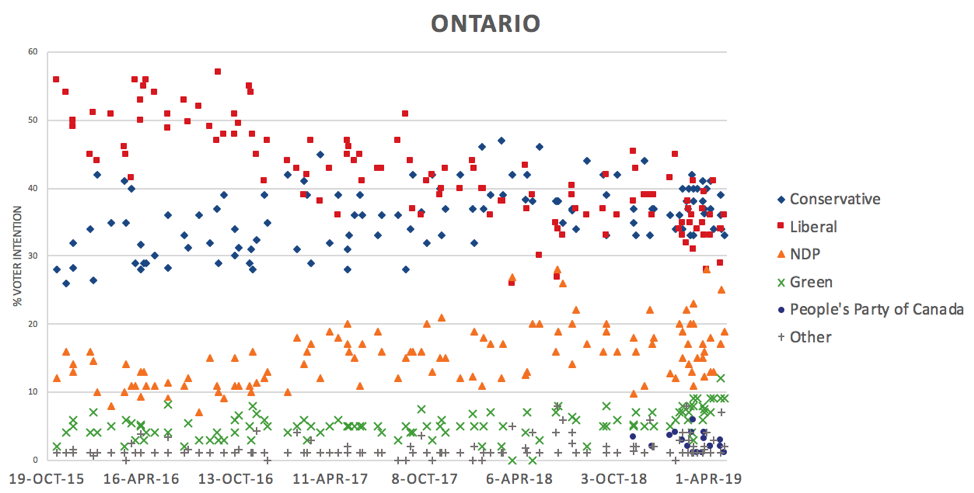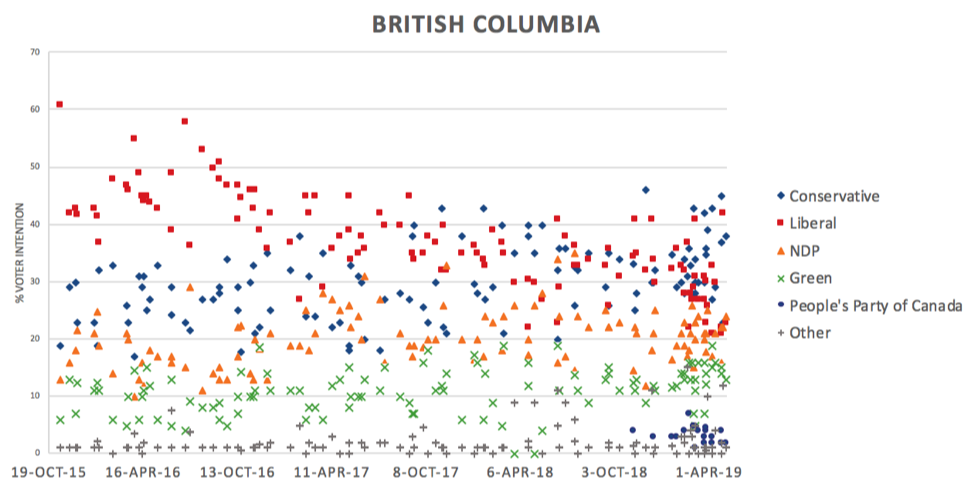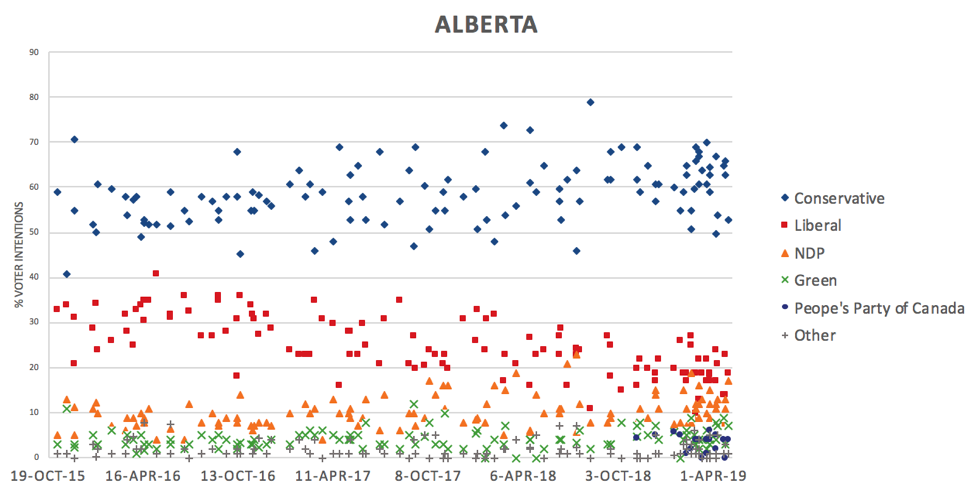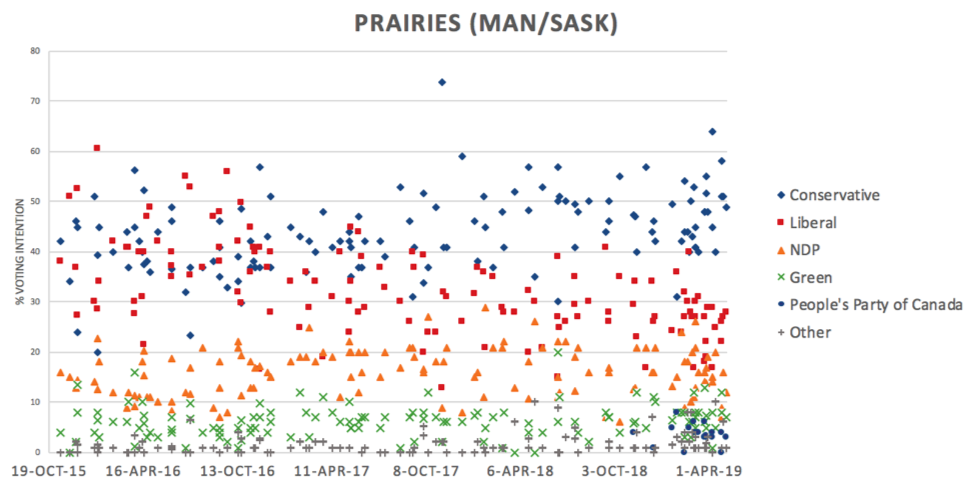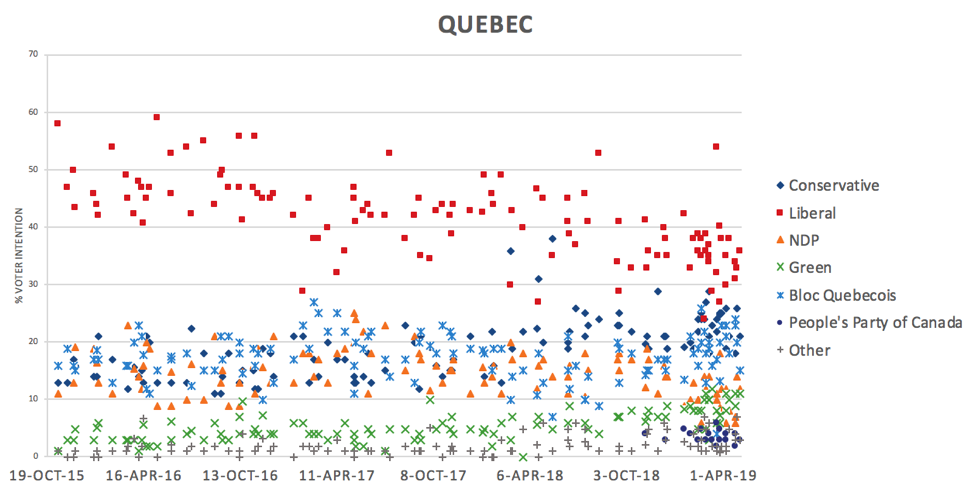By Suhani Singh
The previous blog in this series looked at how the provincial election became a tight race between PCs and NDP. The Conservatives generally topped the polls with the NDP following closely behind during the campaign period creating a neck and neck race in the polls closer to the election. The Liberals saw a significant drop in their popularity during the campaign period, polling significantly below the other two parties by election day. This blog will compare the average province-wide observations made in the previous blog to male and female voters.
Looking only at the male voting preferences, the Conservatives emerge as the winner, significantly beating out the NDP and Liberals in almost all the polls. The PCs consistently polled higher among males with only a slight drop during the campaigning period. Despite the slight drop, the Conservatives still remained at between 40 to 50% support among male voters which is much higher than the overall provincial average. The NDP saw a considerable increase in support during the pre-campaign period that placed the party between 15 to 25% support to about 35% by the end of the campaign. The Liberal Party suffered a great loss of support from close to election, dropping below 20%.

Looking at the female voting preference in the graph below, a trend different from the males is visible. The Conservative Party started strong in the female demographic polling close to 40% during the pre-campaign period but then sees a drop polling close to 30% during the campaign. The NDP began to rise above the Conservatives around this time placing them consistently in the top spot up until the election.

NDP support rose from approximately 25% to close to 40% near the election. Compared to the provincial average (30%-40%), the NDP placed higher among females. The Liberal Party also saw a decline in support closer to election, dropping from around 30% to slightly above 20%. Liberals still polled slightly higher among females than in males and the provincial average, but not enough to be a front runner in the election.
There was a clear distinction between male and female voting preferences. It is interesting to note that Conservatives started as the top choice for both genders early in the year but had a noticeable drop closer to election among female voters when the NDP gained significant support. The NDP saw this significant increase in their support after the first debate on May 7th. It can be surmised by this change in preferences that campaigning matters and can impact voting intentions. Because of these obvious differences observed among the gender demographics, we wanted to see if similar trends can be seen among different age groups. The next blog will explore these differences in a similar way by graphing and looking at trends between generations.


